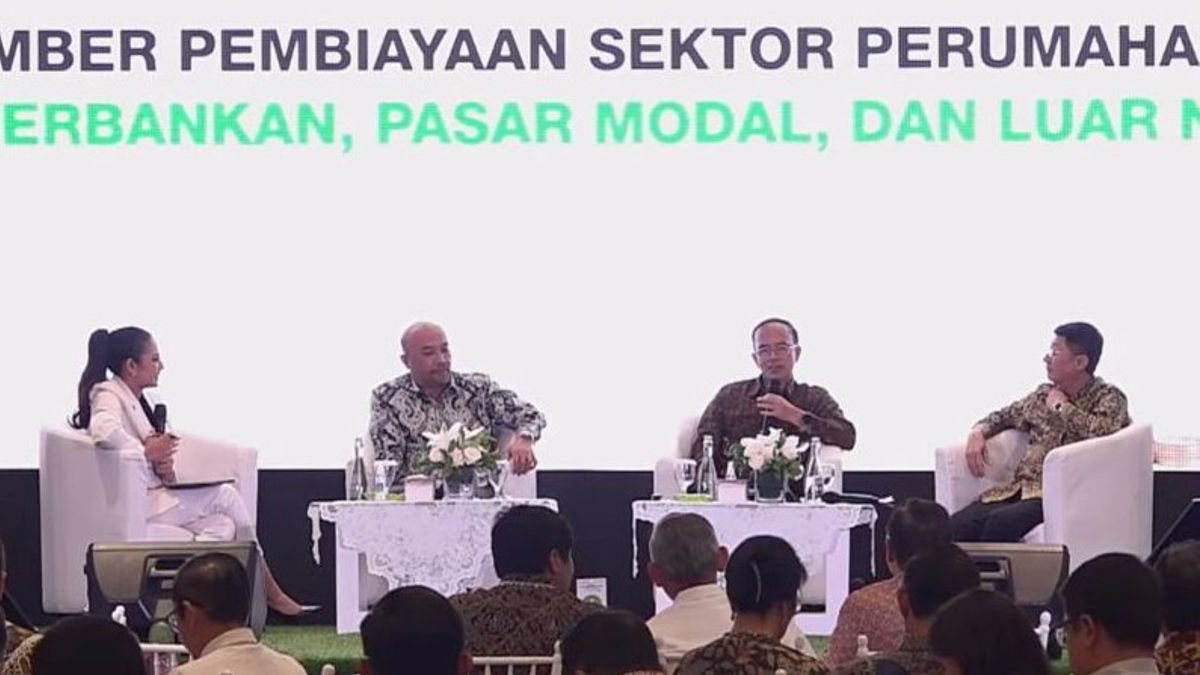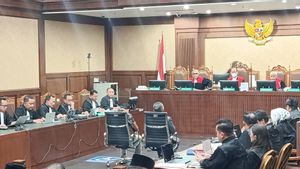جاكرتا - قال رئيس قسم الترخيص وإدارة الأزمات المصرفية في هيئة الخدمات المالية (OJK) أسلان لوبيس إنه من المتوقع أن يوفر دعم اللوائح المختلفة الصادرة عن السلطات مساحة للبنوك في توزيع قروض ملكية المنازل (KPR).
"مع اللوائح (التي أصدرتها OJK) ، نأمل أن يخفف ذلك أو يوفر مساحة للبنوك لتوزيع الائتمان" ، قال أسلان في "حوار حلول التمويل لبرنامج 3 ملايين منزل" في جاكرتا ، نقلا عن عنترة ، الاثنين 17 ديسمبر.
واحدة من اللوائح لدعم نمو سوق الإسكان الوطني هي أنه لا يوجد حظر على البنوك من توزيع الائتمان على حيازة الأراضي أو معالجتها على المطورين.
هذا كما هو مذكور في لائحة OJK (POJK) رقم 27/2022 التي تلغي POJK رقم 44/2017 jo. POJK رقم 16/2018 التي تنظم القيود المفروضة على منح الائتمان لشراء / معالجة الأراضي.
"كما هو معروف ، إذا كان بالنسبة لنا المدين النهائي أو المستهلك النهائي ، شراء المنزل ، لا يمكننا شراء قطعة أرض للحصول على قروض من البنوك. ولكن بالنسبة للمطورين ، يمكن القيام بذلك ، "قال أسلان.
بعد ذلك ، أصدرت OJK أيضا POJK No.32/POJK.03/2018 jo. POJK No.38/POJK.03/2019 الذي يسمح بتوفير الأموال في سياق شراء الإسكان يمكن إعطاء استثناء الحد الأقصى للإقراض (BMPK) في الحالة التي تضمنها المؤسسات المالية للضمانات أو التأمين من الشركات المملوكة للدولة و BUMD.
"بالنسبة لحيازة الأراضي ، على سبيل المثال ، بالنسبة للمطورين ، يتطلب الأمر أموالا كبيرة. وفي هذا السياق، يمكن استبعاده من مصرف BMPK".
الدعم في شكل لوائح أخرى هو SEOJK No.24/SEOJK.03/2021 بشأن حساب الأصول المرجحة وفقا للمخاطر (ATMR) لمخاطر الائتمان مع نهج قياسي. مع هذه القاعدة ، يستند وزن مخاطر الائتمان على المنازل السكنية إلى نسبة القرض إلى القيمة (LTV). من خلال وزن المخاطر الدقيقة ، كلما كان LTV أصغر ، كان وزن ATMR الائتماني أقل.
وقال: "لذلك إذا رتب بنك إندونيسيا القرض الذي تصل قيمته إلى أصغر، فإن الوزن في أجهزة الصراف الآلي سيؤثر لاحقا على رأس المال اللازم لهذا الائتمان الذي يصبح أصغر".
وأضاف أسلان أن هناك أيضا لوائح تدعم تحديد جودة الأصول الإنتاجية استنادا إلى ركيزة واحدة واردة في POJK 40 / POJK.03 / 2019 بشأن تقييم جودة أصول البنك العام. ويستند تحديد جودة الأصول الإنتاجية للمدينين الذين تصل أعمارهم إلى 5 مليارات روبية إندونيسية فقط إلى ركيزة واحدة، وهي دقة مدفوعات رأس المال و/أو الفائدة.
وأوضح أن هناك ثلاث ركائز تستخدمها البنوك لاختبار ما إذا كانت مجدية أم لا مثل المدين، بما في ذلك آفاق الأعمال والقدرة على الدفع والأقساط المملوكة. خاصة بالنسبة للأشخاص ذوي الدخل المنخفض (MBR) في سياق الرهن العقاري ، ثم هناك ركيزة واحدة فقط تنطبق ، وهي القدرة على الدفع.
"لسوء الحظ ، هذا أيضا ما نعرفه جميعا ، بالنسبة لشعب MBR ، هذه القدرة ليست كذلك. لذلك في الواقع ، إذا كنت تعتمد على الأموال المصرفية للمساعدة في تلبية الاحتياجات السكنية ل MBR ، فمن الصعب جدا الشعور بذلك".
ووافق أسلان على أن هناك حاجة إلى تمويل كبير لمساعدة مجتمع مجموعة MBR على امتلاك منزل. في حين أن أكبر صندوق في البنوك هو الصندوق قصير الأجل ، فسيكون هناك تناقض كبير جدا بين الأموال التي تجمعها البنوك لتلبية الاحتياجات طويلة الأجل.
وقال: "بالإشارة إلى البيانات المتعلقة بنسبة السعر إلى الدخل في عام 2023 ، مقارنة بيانات UMP بقدرته (المجتمع) على الدفع مقابل المنازل الصالحة للعيش ، وكان أعلى مستوى 73 عاما في سورابايا وكان أقصر مستوى في بيكاسي 22 عاما".
"ثم عند النظر إليها من حيث دخل الفرد ، فإن الأطول هو 4 سنوات في وسط جاكرتا والأطول هو 37 عاما في ديبوك. وهذا يعني أننا بحاجة إلى أموال كبيرة جدا لمساعدة الأشخاص ذوي الدخل المنخفض".
The English, Chinese, Japanese, Arabic, and French versions are automatically generated by the AI. So there may still be inaccuracies in translating, please always see Indonesian as our main language. (system supported by DigitalSiber.id)













